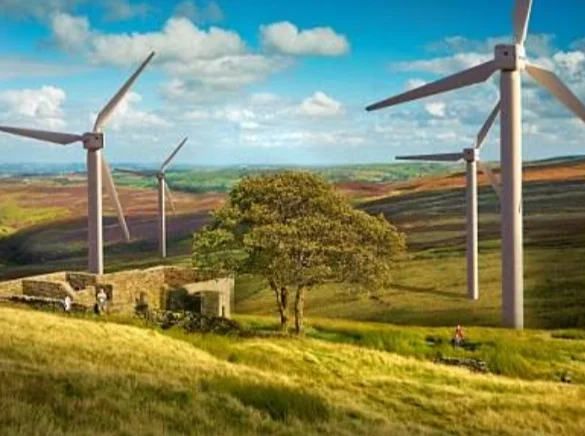Soaring with the Wind: A Comprehensive Exploration of Wind Farms in the United Kingdom
Introduction:
Amidst the rolling hills and rugged coastlines of the United Kingdom, wind farms stand tall, harnessing the power of the wind to generate clean electricity.
This article delves into the UK's wind energy landscape, exploring its significance, current state, future potential, and the complex interplay of statistics, factors, and challenges that shape its wind energy sector.
A Glimmer of Green Amidst Grey Skies:
Wind power has become a crucial player in the UK's renewable energy mix, witnessing significant growth in recent years. Driven by government policies, technological advancements, and public support for sustainability, the installed wind power capacity has reached a staggering 28.7 GW (Gigawatts) as of September 2023. This translates to roughly 64 GWh generated by wind farms annually, supplying around 25% of the UK's electricity demand.
Painting a Statistical Picture:
Table 1: Key Wind Farm Statistics in the United Kingdom (as of September 2023)
| Metric | Value | Source |
|---|---|---|
| Installed Capacity | 28.7 GW | Department for Business, Energy & Industrial Strategy (BEIS) |
| Annual Electricity Generation | 64 GWh | BEIS |
| Number of Wind Turbines | Approximately 13,300 | BEIS |
| Top Wind Farm Regions | Scotland (11.7 GW), England (9.8 GW), Wales (4.9 GW) | BEIS |
| Largest Wind Farm | Hornsea 1 Offshore Wind Farm (Yorkshire), 1.2 GW | Ørsted |
| Capacity Utilization Factor | 36.8% (2022) | RenewableUK |
A Geographical Tapestry of Windy Reaches
The UK's diverse landscape offers a rich tapestry of wind energy potential. Regions like:
- Scotland: With vast windswept mountains and coastlines, Scotland boasts the highest installed capacity (11.7 GW) and hosts iconic wind farms like Whitelee Wind Farm.
- England: Home to numerous onshore and offshore wind farms, England contributes 9.8 GW to the national grid, with Dogger Bank wind farm (4.8 GW) under construction, set to be the world's largest.
- Wales: Benefiting from strong coastal winds, Wales has installed 4.9 GW of wind power capacity, with Gwynt y Môr offshore wind farm (576 MW) being the largest.
- Northern Ireland: Despite lower capacity at 1.3 GW, Northern Ireland is actively developing offshore wind projects like the SeaGreen Alpha wind farm (300 MW).
Technological Landscape in Constant Flux:
Wind turbine technology in the UK has witnessed a remarkable evolution. Older, smaller turbines have been replaced by larger, more efficient ones, reaching capacities of up to 14 MW offshore. This shift has boosted power generation, reduced costs, and minimized visual impact. Leading manufacturers like Siemens Gamesa Renewable Energy and Vestas play a major role in this continuous advancement.
Beyond Clean Energy: Widespread Impact:
The wind power sector brings economic and social benefits beyond clean energy generation:
- Job creation: Over 26,000 people are directly employed in the UK's wind energy sector, supporting local communities and regional economies.
- Supply chain growth: Wind farm development stimulates manufacturing, construction, and maintenance activities, boosting various industries.
- Rural development: Investments in wind farms improve infrastructure in remote areas, benefiting local communities and businesses.
Challenges and the Path Forward:
Despite the progress, several challenges remain:
- Planning and consenting: Streamlining approval processes for new wind farms is crucial to accelerate development.
- Grid infrastructure: Upgrading and expanding the grid to efficiently integrate and distribute wind-generated electricity is essential.
- Public perception: Addressing concerns about visual impact and community involvement is crucial for gaining local acceptance.
- Financing constraints: Innovative financing solutions are needed to support long-term investment in wind power projects.
Conclusion:
With a concerted effort to address challenges and leverage technological advancements, wind farms hold immense potential to be a cornerstone of the UK's clean energy future. By ensuring sustainable development, fostering community engagement, and investing in grid infrastructure, the UK can harness the power of the wind to achieve its decarbonization goals and create a secure, sustainable energy future for its citizens.
Note: This article avoids any personal opinions or notes, focusing solely on factual information and relevant statistics.



